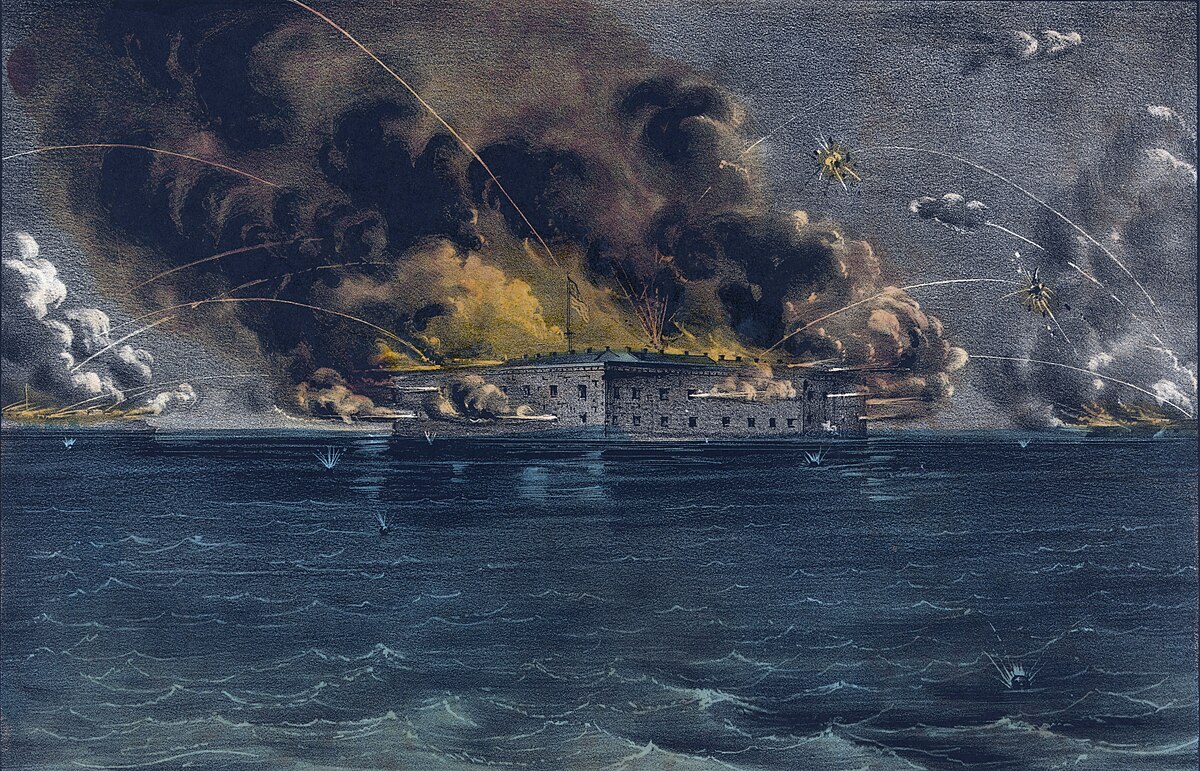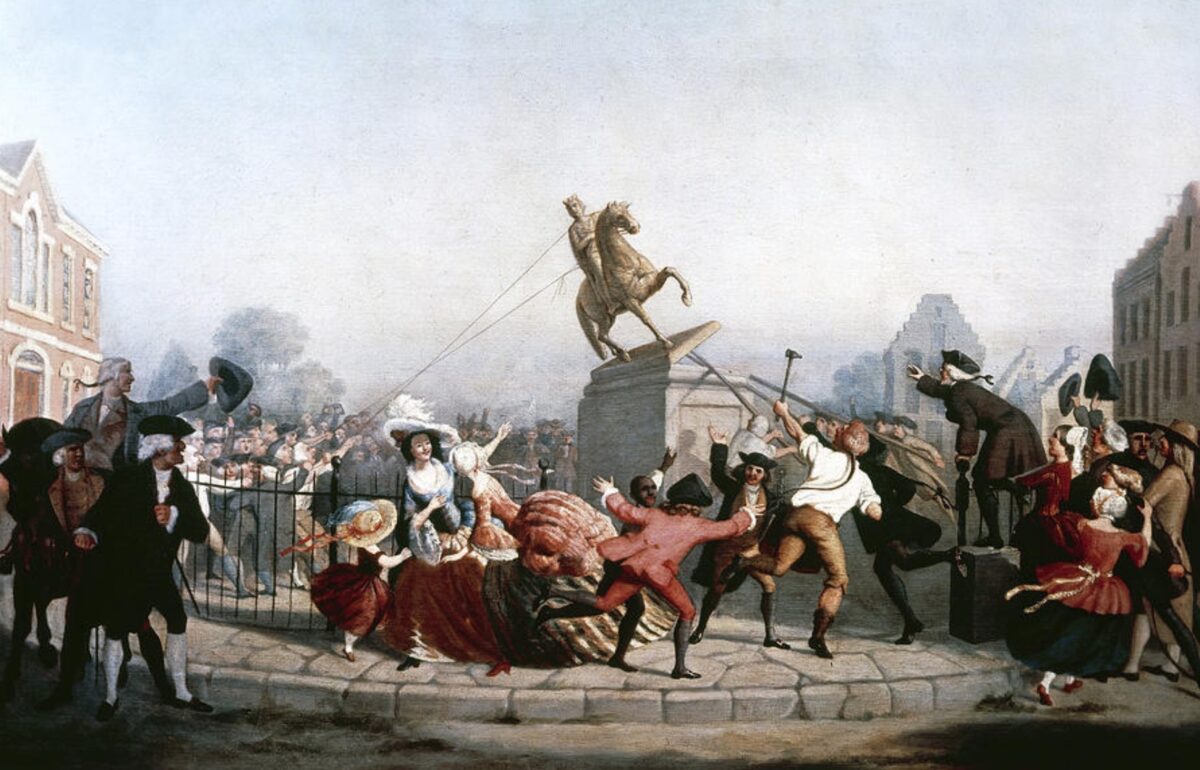Blog #163 – Causes of the Civil War and Inevitable-ness
There has been a lot of time and money and energy spent talking about the causes of the Civil War ever since the guns stopped firing in April 1865. And judging by the historiography, American historians have viewed the primary causes in a different light depending upon the time period in which they lived in. One of the main reasons why there has been such interest in this topic is because the war set Americans vs. Americans and was, in one way, a fight over the future of the country. Were we going to remain an agriculture-based economy (think Jefferson) as exemplified by enslavement or were we going to keep up with the times and become more industrial as seen in the Northern factories? Another issue at stake was the status of African Americans in this country – would they stay or be sent back to Africa? Would slavery and second-class citizenship be their continued status or would they share in the rights that ALL Americans are supposed to have? And how in the world would the country help get four million formerly enslaved African Americans a leg up and possibly on an equal playing field with the rest of the country?
Historians who wrote about the conflict soon after the war were usually Northerners who blamed an aggressive slave conspiracy that wanted to spread the institution all across America. Southern historians saw the conflict as a moral one in which the North instituted an unconstitutional strategy of making the South economically subservient to the North. A third group tended to blame the short-sighted politicians of the antebellum era who could not reach compromises like had been done in the past. President James Buchanan and Senator Stephen Douglas are their usual targets.
By the 1890s, a Nationalist school of history arose, sparked by America’s emergence as a world power economically and politically. One particular historian, James Ford Rhodes, wrote that slavery was the primary cause, where the South fought

the war to extend slavery and that the war was an “irrepressible conlfict”. However, he didn’t see Southern slave owners as hideous monsters and in some ways blamed the cotton gin for making slavery become more entrenched in the South. Slavery, in essence, became a burden that 1860 slaveowners had inherited and some thing that they couldn’t completely control. (Like, what…?) Nationalist historians tended to focus also more on the outcomes of the war – American industry exploded after the war, a more powerful federal government emerged, and we became an imperialist nation starting in 1893. So I guess the Nationalist historians put a positive spin on the enslavement of 4 million people, the deaths of over 750,000 Americans, and the destruction of the Southern economy…. cool story, bruh.
The next group of historians, writing in the 1920s and 30s, was called the Progressive School and was influenced by the ill social effects of run-amuck industrialism and uneven distribution of wealth in the country. Charles and Mary Beard were two of the most influential of this school, and they saw the war as a “social cataclysm” in which “the capitalists, laborers, and farmers of the North and West drove from power in the national government the planting aristocracy in the South.” This school of history focused more on the economic causes of the war instead of slavery, which fit well with some very racist historians writing at the time who portrayed the South as a land of chivalrous planters with their pathetically helpless and loyal slaves – by contrast the North were nasty, profit-driven capitalists trying to destroy the honor and tradition of the South. Essentially, the Lost Cause Myth, which we will explore in the coming weeks.
Revisionist historians, writing in the 1930s and 40s, saw the war as an insufferable evil, regardless of causes. The political leaders were to blame for not taking advantage of alternatives that could have saved the nation. They thought that the war could have been avoided, and that the politicians had deliberately set apart the North and South during 1840 – 1860 as people who were both trying to preserve their culture and way of life. James G. Randall called these politicians the “blundering generation.”

Starting in the 1960s, newer historians started reevaluating all of these previous approaches and started to synthesize them together and not focusing on just one cause. Prominent historians like Edward Ayers, Michael Holt, Eric Foner (the author of a competing APUSH textbook and an expert on Reconstruction), James McPherson, Manisha Sinha all mashed these causes together and reformulated the causes of the war together. Some focused on an ideological conflict – whether slavery or economics – that primarily caused the war. During this time, we also see more women and historians of color asking different questions than previous generations who had their own takes on the war as the academic world becomes more diversified.
I think this Venn diagram kinda shows how that maybe all of them interlock together.
Here are the 2 questions I asked you at the beginning of this unit:
- So, when you think about what primarily caused the Civil War, there is a lot to choose from. Slavery? Economics? States’ rights? Clash of cultures? Terrible politicians? Westward expansion? Which is it and why?
- Do you think the war was inevitable? If yes, at what point did it become inevitable? If you don’t believe the war was inevitable, why did the war start when it did with the bombing of Fort Sumter?
Please answer both of these questions with a minimum of 400 words total for both answers by the beginning of class on Monday, January 8.




